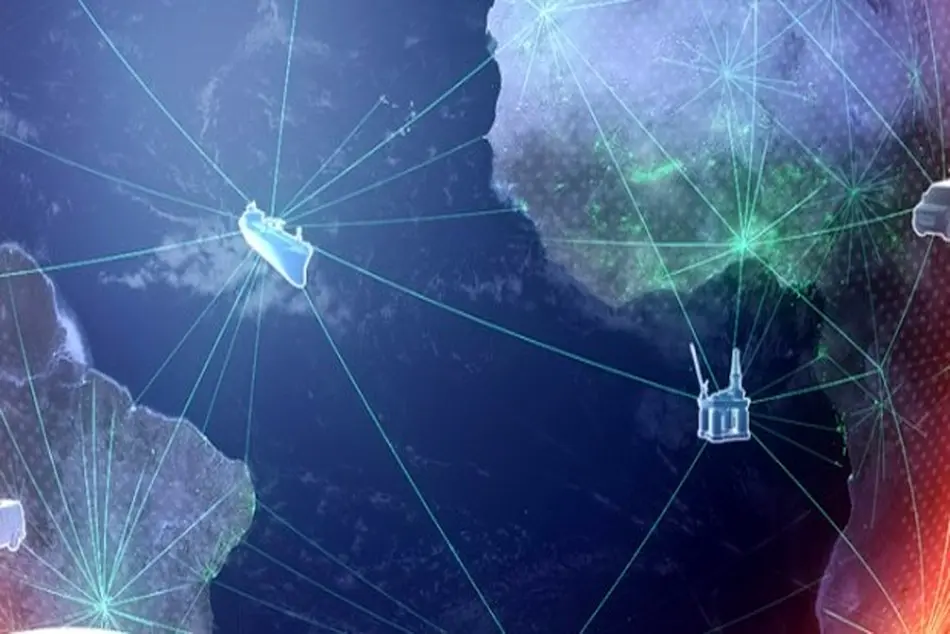Inmarsat carries the safety message

Ronald Spithout, President, Inmarsat Maritime outlines his company’s efforts for enhancing safety at sea and discloses information about Inmarsat’s new services and improvements. Mr. Spithout highlights his company commitment to cyber safety and security and reveals that Inmarsat is about to launch a new system addressing cybercrime before the end of 2017. Being part of a new IACS joint working group which is working towards a harmonised approach to cyber security, Inmarsat is also developing a new cyber training course in collaboration with the World Maritime University.
At Inmarsat, we say safety is ‘in our DNA’, partly because seafarer safety was among the primary objectives set out for the organisation on its formation as an intergovernmental agency in 1979. In the intervening years, reliable communications have become even more critical for ships, as their operations increasingly depend on technology.
The IMO is updating GMDSS, but the process is not expected to be complete before 2021-22. However, in a related move, Inmarsat will launch SafetyNET II before the end of this year. SafetyNET II is an internet-based version of SafetyNET – the Maritime Safety Information messaging system on which seafarers rely for Search and Rescue coordination.
Often unacknowledged, SafetyNET has been connecting ships at sea via satellite and land earth stations with regional Maritime Rescue Coordination Centres for over 20 years. Between 2009 and 2014, 15,000 distress alerts were received over SafetyNET. The network also broadcasts 360,000 messages each year, including local weather, navigation and piracy warnings. All messages from shore-to-ship are received free of charge.
Irrespective of regulatory developments, however, making real improvements to safety at sea relies on more than satellite services. Inmarsat has been working closely with its Maritime Rescue Coordination Centre partners to upgrade SafetyNET II, investing in web-based software that is easy to use and enables message scheduling, monitoring, repeat and cancellation capability.
In fact, SafetyNET II is laying the foundation for the richer safety-critical information and accountability that will enhance GMDSS 2.0, under development by the IMO.
As a secure web-based service, SafetyNET II is much easier to use for MSI and SAR broadcasts, which will reduce the risk of erroneous information reaching vessels. It also allows the originator to monitor the status of every message, confirming if it has been sent, scheduled to send or cancelled as well as confirm that messages were broadcast correctly.
These are critical improvements, although their significance may be lost on service providers without Inmarsat’s maritime heritage. Nor is SafetyNET II simply based on IMO expectations. One of its most noticeable SAR features may prove to be something which is not technically complex: to avoid language-related issues, users will be able to override the default and use the MRCC in their domicile sea-zone.
Again, there is no ‘distress chat’ envisaged under GMDSS 2.0, but this functionality is now an expectation, not an aspiration: Inmarsat has responded to MRCC feedback to include this within SafetyNET II.
SafetyNET II is being phased in progressively across different geographical areas and agreements with partners, but it has already saved lives in two Search and Rescue operations of New Zealand RCC during trials. Meanwhile, French safety organization SHOM has gone on record to praise “an effective tool which constitutes a very clear improvement”.
Naturally, during a shipping down-cycle, attention has focused on the ship efficiency and crew welfare benefits offered by the Fleet Xpress combination of high speed Ka-Band and reliable L-Band. However, the shipboard bandwidth on-demand and content pre-positioning available through Fleet Xpress also bring breakthrough safety gains. The service can enable telemedicine, where remote real-time intervention by a medical team using bandwidth on-demand could be a matter of life and death.
Again, Fleet Media services can include training content, at a time when computer-based training companies see online seafarer profiling as critical tools to better manage crew competence and career paths.
In the Fleet Xpress context, we will address the rise of cybercrime through the launch a new United Threat Management (UTM) system before the end of 2017.
Surveys we have commissioned tell us that over 90% of seafarers have had no cyber security training at all, but around half have experienced a cyber security incident. Keeping ships safe today includes protecting the software they are running, but also protecting ships systems from the inadvertent introduction of malware. On one hand, then, the Inmarsat UTM system isolates compromised terminals onboard until the threat can be neutralised. On the other, Inmarsat is part of the new IACS joint working group, which is working towards a harmonised approach to cyber security, and is developing a new cyber training course in collaboration with the World Maritime University.
We are convinced that greater familiarity with security procedures will deliver improved safety at sea. Furthermore, the maritime industry has a responsibility to ensure that social media is a positive influence. Pre-emption provisions ensure that GMDSS always takes precedence over ‘chatter’ but, for young seafarers, social media is simply the medium for communication – and that goes for letting those at home know they are safe, or in trouble.
In 2001, I was the Chief Technology Officer for Station 12, at a time when telex lease lines were still considered the secure messaging route to the MRCC. That may sound like the stone age, but it has only been in the last 15 years since we as an industry shifted over to IPsec Tunnels.
My point is that enhancing safety at sea relies on a culture of continuous improvement which is forward-looking enough to take advantage of the latest technical developments, but flexible enough to carry an entire industry with it.